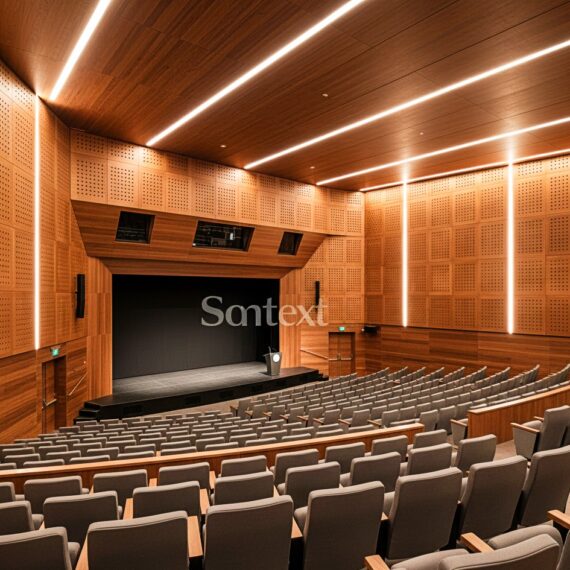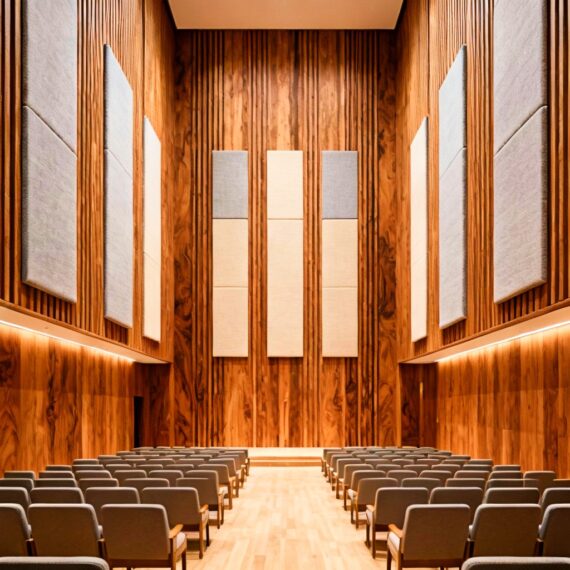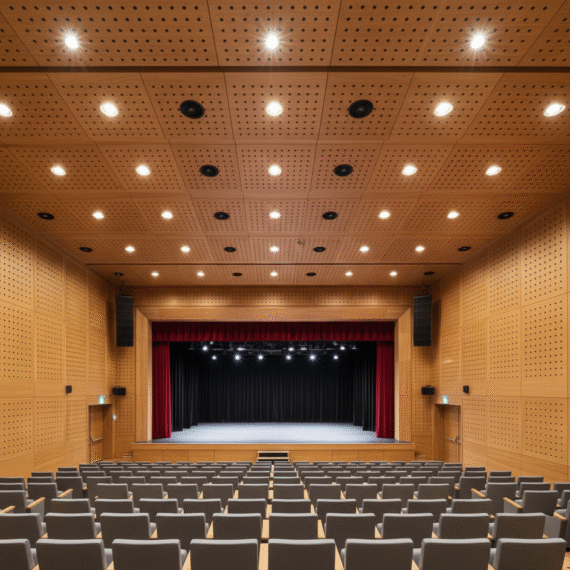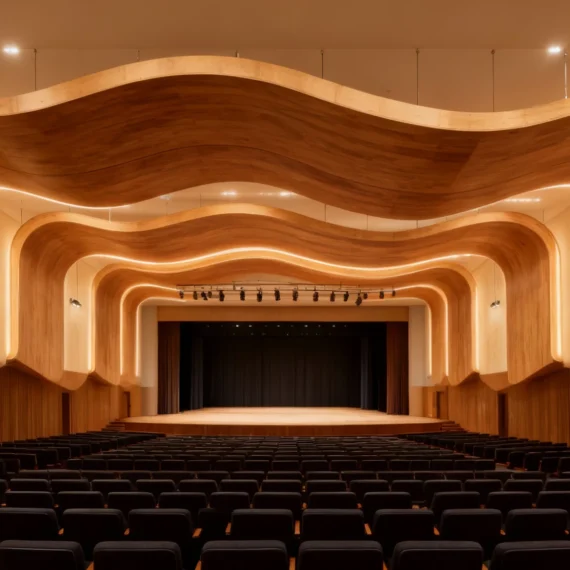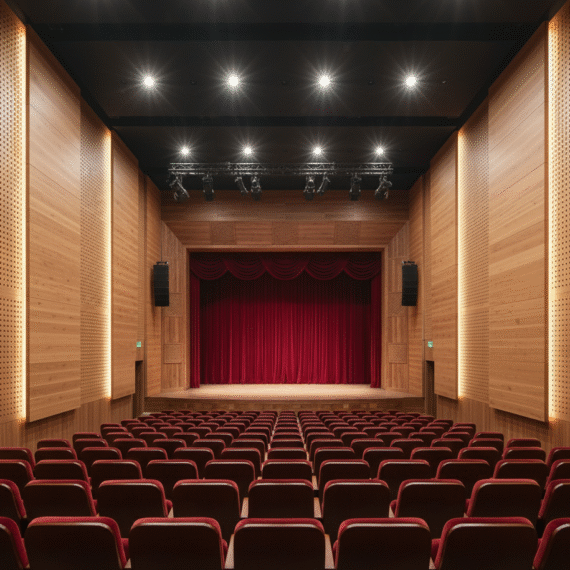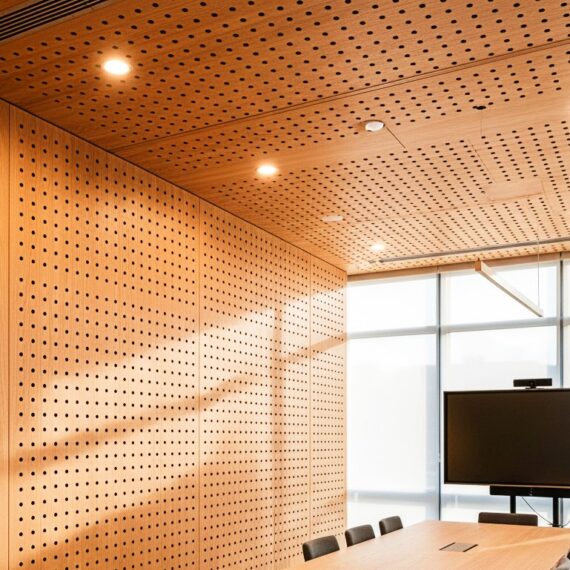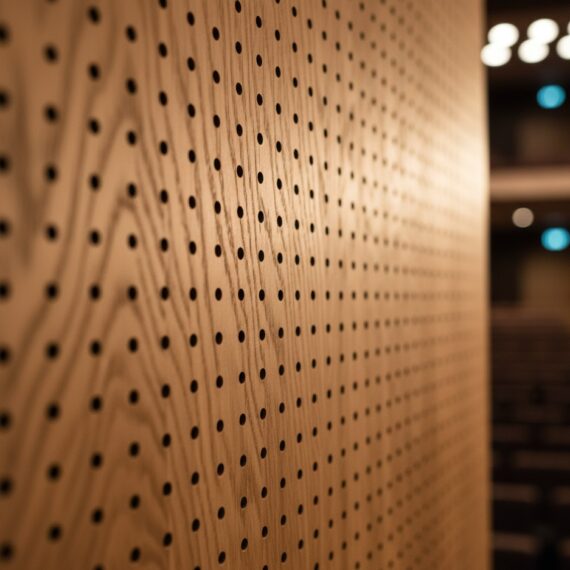The Beauty of Timber in Acoustic Design
Murano Timber Acoustic Panels bring warmth, craft, and reliable sound control to modern interiors. Architects choose timber for its natural character and the way it softens spaces while delivering consistent acoustic performance in offices, schools, hospitality, and worship settings.
Why Timber Works Acoustically
Timber linings diffuse and absorb sound when engineered with the right profiles. Perforations, slots, or grooves allow sound energy to enter a tuned cavity behind the face sheet, reducing reverberation and improving speech clarity. With careful layout, timber delivers a calm, intelligible environment without losing the integrity of the original architecture.
Design Options That Respect the Interior
- Grooved panels for classic linear patterns on walls and ceilings (Murano Grooved).
- Perforated panels with round-hole patterns in various diameters and centres (Murano Perforated).
- Slotted profiles for bold lines and strong visual rhythm (Murano Slotted).
- Veneers & finishes from light oak to rich walnut, clear or stained coatings, and paint finishes to suit brand palettes.
Where Timber Panels Excel
Use Murano in boardrooms, reception areas, lecture theatres, restaurants, and sanctuaries. Panels carry across large surfaces without visual clutter, provide a durable face, and work with integrated lighting, AV, and services for a clean, well-ordered result.
Technical Specifications — Murano Timber Panels
| Property | Specification |
|---|---|
| Panel Types | Grooved, Slotted, Perforated timber panels (walls/ceilings) |
| Acoustic Performance (NRC) | Typical 0.65–0.85 with acoustic backing and airgap (pattern-dependent) |
| Substrates | MDF or plywood; E0/E1 options available |
| Face Finishes | Real timber veneers, laminate, or paint; clear or stained low-VOC coatings |
| Panel Thickness | 12–18 mm face sheet typical; overall build-up varies with cavity/backing |
| Patterns | Groove widths/centres, slot widths, hole Ø and centres per schedule |
| Fire Performance | AS/NZS 1530.3 tested; Group number to AS 5637.1 dependent on system/finish |
| Mounting | Concealed split battens, accessible clip rails, or ceiling carriers |
| Maintenance | Wipe with soft cloth; avoid abrasive cleaners; periodic inspection of fixings |
| Applications | Boardrooms, reception areas, auditoriums, lecture theatres, restaurants, worship spaces |
Specifications are indicative. Acoustic results vary with pattern, backing, and cavity depth. For project data sheets, contact Murano.
FAQs
Can timber panels meet strict acoustic targets?
Yes. By selecting the right groove/slot/hole pattern, backing, and cavity depth, Murano reaches classroom, theatre, and office RT goals.
Are veneers durable enough for busy spaces?
Commercial coatings provide a resilient surface. Edge trims and correct fixing further protect high-traffic areas.
Do panels allow access to services behind walls?
Yes. Concealed clip systems and demountable battens enable panel removal for maintenance.
Can finishes be matched to existing joinery?
Murano offers a wide veneer range and stain matching to keep a unified interior palette.
Where should timber panels be placed?
Treat rear and side walls for speech clarity, and use ceiling arrays over audience or workstation areas to control reverberation.
Next Steps
Explore Murano Grooved, Murano Perforated, and Murano Slotted for your next project. For specification support or samples, contact Murano.



